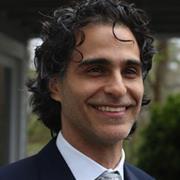Physics: Physics Education
Spring: n/a
Summer: n/a
Overview
The PhD in Physics: Physics Education combines curriculum from the Department of Physics and Astronomy and the Department of Education. Students participate in a larger community of discipline-based education research in STEM fields through the Institute for Research on Learning and Instruction.
Program Outcomes
As a student in the Physics Education doctoral program, you'll develop graduate-level understanding in physics and in research on learning and instruction, through both coursework and participation in your own original research, which will include completing a dissertation that contributes to the literature. The program is designed to prepare students for faculty positions in higher education, although graduates may go on to a variety of careers, such as in private education-related industry or museums.
Application Requirements
- Application fee
- Resume/CV
- Personal statement - Tell us about what motivates you to study STEM Education at Tufts. In this we are hoping for a reflection about your experiences and personal objectives, 1500-2500 words.
- Writing Sample - Where the personal statement is about you, this should be a sample of your scholarly writing about a topic in STEM Education, citing references from relevant literature. Feel free to send a paper you've already written, for a course or for publication, or write something new focused on problems you are interested to study.
- Official TOEFL, IELTS, or Duolingo English Test, if applicable
- Transcripts
- Three letters of recommendation
Tuition and Financial Aid
See Tuition and Financial Aid information for GSAS Programs.
Faculty

David Hammer

David Hammer
Research/Areas of Interest: Research on learning and instruction. My research is on learning and teaching in STEM fields (mostly physics) across ages from young children through adults. Much of my focus has been on intuitive "epistemologies," how instructors interpret and respond to student thinking, and resource-based models of knowledge and reasoning.

Timothy Atherton

Timothy Atherton
Research/Areas of Interest: Condensed Matter Physics, Soft materials, Colloids, Liquid Crystals, Computational Physics, Physics Education Soft matter physics is the study of matter that is all around us in everyday life: soaps, oil, foods, sand, foams, and biological matter. All of these are readily deformable at room temperature and combine properties of both fluids and solids. Despite their ubiquity, these materials are extremely complicated. Unlike simple fluids like water, they have rich internal structure; unlike crystalline solids they are typically not periodically ordered. Moreover, they exist in long-lived metastable states far from equilibrium and respond to stimuli such as applied electric and magnetic fields, temperature and pressure. My work seeks to understand how these materials respond to shape: how they self-organize on curved surfaces or in complex geometries and how this knowledge can be used both to sculpt desirable shapes at the microscopic scale and create shape changing systems like soft robots. We use high performance computing to simulate and predict these behaviors and work closely with experimentalists at Tufts and beyond.

Vesal Dini

Vesal Dini
Research/Areas of Interest: Physics Education Research: Scientists are professional learners who employ a range of skills and qualities to learn new things. Why should it be any different for students in how they advance in their understanding of scientific concepts? My current research focuses on how learners come to engage in the practices of science in their efforts to learn new things. To make progress on the question, I have studied how learners' views of knowledge (personal epistemologies) impact their scientific engagement in the contexts of introductory physics, quantum mechanics, and science teacher education. I have also studied the interaction of personal epistemology with emotions that come up in the doing of science (epistemic affect). Most recently, I have looked at how personal epistemology interconnects with social caring and epistemic empathy. These studies help outline some paths to progress in equity and inclusion in STEM fields, and inform my approaches to teaching.

Hugh Gallagher

Hugh Gallagher
Research/Areas of Interest: Experimental particle physics, neutrino oscillations, neutrino interaction physics, neutrino astrophysics, computer simulations of neutrino-nucleus interactions. The main thrust of my research is the study of the neutrino. Through neutrino oscillation experiments, we are gaining insights into neutrino masses and mixing parameters. Precise measurements of these quantities may allow us to uncover the reason behind the matter-antimatter asymmetry in the universe, or point the way to a theory beyond the standard model. Precise measurements of oscillation parameters require good models of neutrino-nucleus interactions. I work on experiments that are studying neutrino oscillations (NOvA and DUNE), on experiments that are providing new data on neutrino-nucleus interactions (MINERvA), and on a widely-used software package (GENIE) that is used to simulate neutrino-nucleus interactions.

Roger Tobin

Roger Tobin
Research/Areas of Interest: Experimental condensed matter physics; physics education For most of my career, my primary physics research area has been experimental surface science. In my lab at 574 Boston Ave., my students and I have studied what happens when foreign atoms and molecules form chemical bonds with metal surfaces. Our research has had implications for a range of potential applications including catalysis, chemical sensing, and the growth of thin films and nanoparticles on surfaces. In recent years my focus has shifted towards physics education, at both the college and, especially, at the elementary school level. Together with collaborators at a local nonprofit organization and at other universities, I have helped to develop and study curriculum materials and professional development strategies for the study of matter and energy in grades 3-5. In my own classes at Tufts, I have implemented and studied a range of instructional approaches aimed at more effective and equitable learning.